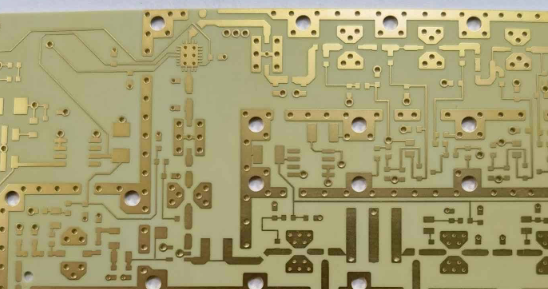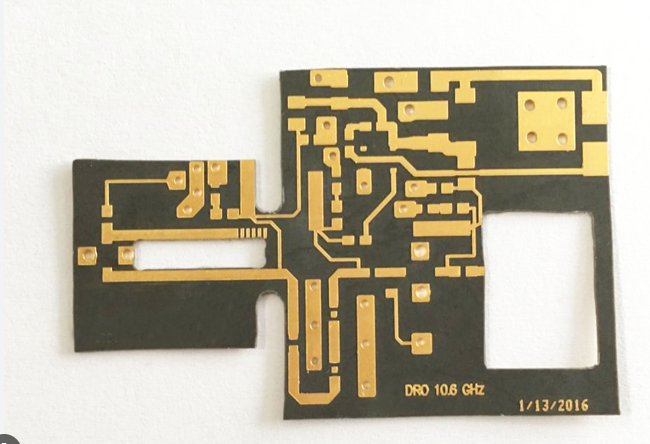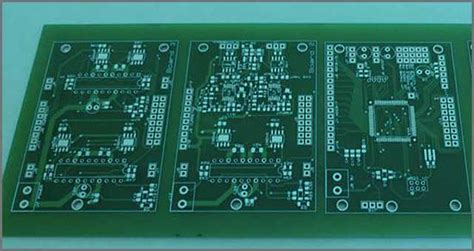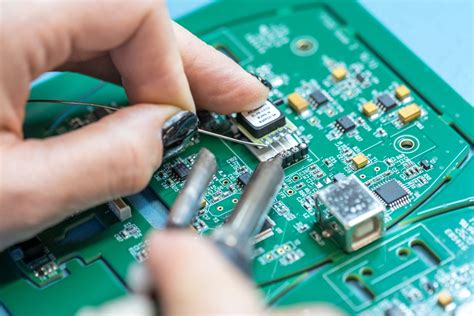Rogers pcb substrate
Advantages Of Using Rogers PCB Substrate In High-Frequency Applications
Rogers PCB substrates have become a cornerstone in the realm of high-frequency applications, offering a multitude of advantages that make them indispensable for engineers and designers.
One of the primary benefits of using Rogers PCB substrates is their exceptional dielectric properties.
These substrates exhibit low dielectric constant (Dk) and low dissipation factor (Df), which are crucial for maintaining signal integrity and minimizing signal loss in high-frequency circuits. This ensures that the performance of the electronic device remains consistent and reliable, even at elevated frequencies.
In addition to their superior dielectric properties, Rogers PCB substrates are known for their excellent thermal management capabilities.
High-frequency applications often generate significant amounts of heat, which can adversely affect the performance and longevity of electronic components. Rogers substrates are designed to efficiently dissipate heat, thereby reducing the risk of thermal-related failures and enhancing the overall reliability of the device. This thermal stability is particularly important in applications such as RF and microwave circuits, where maintaining a stable operating temperature is critical.
Moreover, Rogers PCB substrates offer outstanding dimensional stability, which is essential for precision in high-frequency applications.
Dimensional stability refers to the ability of the substrate to maintain its size and shape under varying environmental conditions, such as changes in temperature and humidity. This characteristic ensures that the physical dimensions of the circuit remain consistent, thereby preventing issues such as misalignment and signal distortion. Consequently, Rogers substrates are highly favored in applications that demand high precision and accuracy.
Another significant advantage of Rogers PCB substrates is their compatibility with advanced manufacturing processes.
These substrates can be easily integrated into various fabrication techniques, including multilayer PCB construction and surface-mount technology (SMT). This versatility allows for the creation of complex and compact circuit designs, which are often required in high-frequency applications. Additionally, Rogers substrates exhibit excellent adhesion properties, ensuring robust and reliable connections between the substrate and other materials used in the PCB assembly.
Furthermore, Rogers PCB substrates are renowned for their low moisture absorption characteristics.
Moisture absorption can lead to changes in the dielectric properties of the substrate, resulting in signal degradation and reduced performance. By minimizing moisture absorption, Rogers substrates help maintain the integrity of the signal transmission, even in humid or moisture-prone environments. This makes them ideal for use in outdoor and harsh environmental conditions, where exposure to moisture is a common concern.
The mechanical robustness of Rogers PCB substrates also contributes to their widespread adoption in high-frequency applications.
These substrates are designed to withstand mechanical stresses, such as bending and vibration, without compromising their performance. This durability ensures that the electronic device remains functional and reliable, even in demanding operational environments. As a result, Rogers substrates are often employed in aerospace, defense, and telecommunications industries, where reliability and performance are paramount.
In conclusion, the advantages of using Rogers PCB substrates in high-frequency applications are manifold. Their exceptional dielectric properties, thermal management capabilities, dimensional stability, compatibility with advanced manufacturing processes, low moisture absorption, and mechanical robustness make them an ideal choice for engineers and designers. By leveraging these benefits, high-frequency electronic devices can achieve superior performance, reliability, and longevity, thereby meeting the stringent demands of modern technological advancements.

Comparing Rogers PCB Substrate To FR4: Key Differences And Benefits
When it comes to printed circuit boards (PCBs), the choice of substrate material is crucial for determining the performance, reliability, and cost of the final product. Two of the most commonly used materials in the industry are Rogers and FR4. Understanding the key differences and benefits of these substrates can help engineers and designers make informed decisions tailored to their specific applications.
Rogers PCB substrates are renowned for their superior electrical properties, particularly in high-frequency applications.
Unlike FR4, which is a glass-reinforced epoxy laminate, Rogers materials are typically made from a combination of ceramic and PTFE (polytetrafluoroethylene). This composition grants Rogers substrates a lower dielectric constant and loss tangent, which are essential for minimizing signal loss and ensuring signal integrity at high frequencies. Consequently, Rogers materials are often the substrate of choice for RF (radio frequency) and microwave circuits, where performance at high frequencies is paramount.
In contrast, FR4 is widely used due to its cost-effectiveness and versatility.
It is a reliable material for a broad range of applications, from consumer electronics to industrial equipment. However, its electrical properties are not as favorable as those of Rogers substrates, particularly at higher frequencies. The dielectric constant of FR4 is higher, and its loss tangent is greater, which can lead to increased signal attenuation and reduced performance in high-frequency circuits. Despite these limitations, FR4 remains a popular choice for many applications due to its affordability and mechanical strength.
Another significant difference between Rogers and FR4 substrates lies in their thermal properties.
Rogers materials generally exhibit better thermal stability and lower thermal expansion coefficients compared to FR4. This makes Rogers substrates more suitable for applications that involve significant temperature variations or require high thermal reliability. For instance, in aerospace and defense applications, where environmental conditions can be extreme, the thermal performance of Rogers substrates can be a critical factor in ensuring the longevity and reliability of the PCB.
Moreover, the manufacturing process for Rogers substrates can be more complex and costly compared to FR4.
The specialized materials and techniques required for Rogers PCBs often result in higher production costs. However, the investment can be justified by the enhanced performance and reliability in demanding applications. On the other hand, FR4’s widespread availability and simpler manufacturing process make it a cost-effective solution for many standard applications, where the advanced properties of Rogers substrates may not be necessary.
In terms of mechanical properties, both Rogers and FR4 offer robust solutions, but the choice between them often depends on the specific requirements of the application. FR4’s glass-reinforced structure provides excellent mechanical strength and durability, making it suitable for applications where mechanical stress is a concern. Rogers substrates, while also mechanically robust, are chosen primarily for their electrical and thermal advantages.
In conclusion, the decision between Rogers and FR4 PCB substrates hinges on a careful consideration of the application’s specific needs. Rogers substrates offer superior electrical and thermal properties, making them ideal for high-frequency and high-reliability applications. Conversely, FR4 provides a cost-effective and versatile solution for a wide range of standard applications. By understanding the key differences and benefits of these materials, engineers and designers can select the most appropriate substrate to optimize the performance and reliability of their PCBs.

Design Considerations For Rogers PCB Substrate In RF And Microwave Circuits
When designing RF and microwave circuits, the choice of substrate material is a critical factor that significantly influences the performance, reliability, and manufacturability of the final product. Among the various substrate materials available, Rogers PCB substrates have gained widespread recognition for their superior electrical properties and consistent performance at high frequencies. As engineers embark on the design process, several key considerations must be taken into account to fully leverage the advantages offered by Rogers PCB substrates.
First and foremost, the dielectric constant (Dk) of the substrate material plays a pivotal role in determining the signal integrity and impedance control of RF and microwave circuits.
Rogers PCB substrates are renowned for their low and stable dielectric constants, which minimize signal loss and ensure consistent performance across a wide frequency range. This stability is particularly crucial in high-frequency applications where even minor variations in Dk can lead to significant signal degradation. Therefore, selecting a Rogers substrate with an appropriate dielectric constant tailored to the specific frequency requirements of the circuit is essential.
In addition to the dielectric constant, the loss tangent (Df) of the substrate material is another critical parameter that must be carefully considered.
The loss tangent quantifies the inherent energy dissipation within the substrate, which directly impacts the efficiency and thermal performance of the circuit. Rogers PCB substrates exhibit low loss tangents, thereby reducing signal attenuation and enhancing overall circuit efficiency. This characteristic is especially beneficial in applications such as satellite communications, radar systems, and wireless infrastructure, where minimizing signal loss is paramount.
Thermal management is another vital aspect that cannot be overlooked when designing with Rogers PCB substrates.
High-frequency circuits often generate substantial heat, which, if not properly managed, can lead to performance degradation and potential failure. Rogers substrates are engineered to offer excellent thermal conductivity, facilitating efficient heat dissipation and maintaining the integrity of the circuit under demanding operating conditions. Incorporating appropriate thermal vias, heat sinks, and other cooling mechanisms in the design can further enhance thermal management and ensure reliable operation.
Moreover, the mechanical properties of the substrate material are equally important in the design process.
Rogers PCB substrates are known for their dimensional stability, which ensures that the physical dimensions of the circuit remain consistent during fabrication and operation. This stability is crucial for maintaining precise impedance control and signal integrity, particularly in high-frequency applications where even slight variations can have a significant impact. Additionally, the robust mechanical properties of Rogers substrates contribute to the overall durability and longevity of the circuit, making them suitable for use in harsh environments.
Transitioning from material properties to practical design considerations, it is essential to address the manufacturability of Rogers PCB substrates
. While these substrates offer numerous advantages, their unique properties can pose challenges during the fabrication process. For instance, the low dielectric constant and loss tangent of Rogers materials may require specialized processing techniques and equipment. Collaborating closely with experienced PCB manufacturers who are familiar with Rogers substrates can help mitigate potential issues and ensure a smooth production process.
Furthermore, the choice of substrate material also influences the selection of other components and materials used in the circuit.
For example, the compatibility of the substrate with various types of solder masks, surface finishes, and adhesives must be carefully evaluated to prevent any adverse interactions that could compromise the performance or reliability of the circuit. Conducting thorough compatibility testing and adhering to recommended guidelines provided by Rogers Corporation can help achieve optimal results.
In conclusion, designing RF and microwave circuits with Rogers PCB substrates necessitates a comprehensive understanding of the material properties and their impact on circuit performance. By carefully considering factors such as dielectric constant, loss tangent, thermal management, mechanical stability, and manufacturability, engineers can harness the full potential of Rogers substrates to create high-performance, reliable, and efficient RF and microwave circuits.

Thermal Management Solutions With Rogers PCB Substrate
Rogers PCB substrates have become a cornerstone in the field of thermal management solutions, particularly in high-frequency and high-power applications. These substrates are renowned for their superior thermal conductivity, low dielectric loss, and excellent mechanical stability, making them an ideal choice for a wide range of electronic applications.
As electronic devices continue to shrink in size while increasing in functionality, the need for efficient thermal management has never been more critical. Rogers PCB substrates address this need by providing a robust platform that effectively dissipates heat, thereby enhancing the performance and longevity of electronic components.
One of the primary advantages of Rogers PCB substrates is their exceptional thermal conductivity.
Unlike traditional FR-4 materials, which often struggle to manage heat effectively, Rogers substrates are engineered to facilitate efficient heat transfer. This is particularly important in high-power applications where excessive heat can lead to component failure or reduced performance. By using Rogers substrates, designers can ensure that heat is efficiently dissipated, thereby maintaining optimal operating temperatures and improving the overall reliability of the device.
In addition to their thermal properties, Rogers PCB substrates also offer low dielectric loss, which is crucial for high-frequency applications.
Low dielectric loss ensures minimal signal attenuation, thereby preserving signal integrity and enhancing the performance of high-speed circuits. This makes Rogers substrates particularly suitable for applications such as RF and microwave circuits, where maintaining signal integrity is paramount. The combination of low dielectric loss and high thermal conductivity makes Rogers substrates a versatile solution for a wide range of electronic applications.
Moreover, Rogers PCB substrates exhibit excellent mechanical stability, which is essential for maintaining the structural integrity of the PCB under various environmental conditions.
This stability ensures that the substrate can withstand thermal cycling, mechanical stress, and other environmental factors without compromising its performance. This is particularly important in applications such as aerospace and automotive electronics, where reliability and durability are critical. By providing a stable and robust platform, Rogers substrates help ensure the long-term reliability of electronic systems in demanding environments.
Furthermore, the versatility of Rogers PCB substrates extends to their compatibility with various fabrication processes.
These substrates can be easily integrated into existing manufacturing workflows, making them a convenient choice for designers and manufacturers. The ability to seamlessly incorporate Rogers substrates into the production process not only simplifies manufacturing but also reduces costs and lead times. This compatibility, combined with their superior performance characteristics, makes Rogers substrates an attractive option for a wide range of applications.
In conclusion, Rogers PCB substrates offer a comprehensive solution for thermal management in high-frequency and high-power applications. Their exceptional thermal conductivity, low dielectric loss, and excellent mechanical stability make them an ideal choice for a variety of electronic applications. As the demand for smaller, more powerful electronic devices continues to grow, the need for efficient thermal management solutions will only become more critical. By leveraging the unique properties of Rogers PCB substrates, designers and manufacturers can ensure that their electronic systems operate at peak performance while maintaining reliability and durability. The integration of Rogers substrates into electronic designs represents a significant advancement in the field of thermal management, providing a robust and versatile solution for the challenges of modern electronics.





